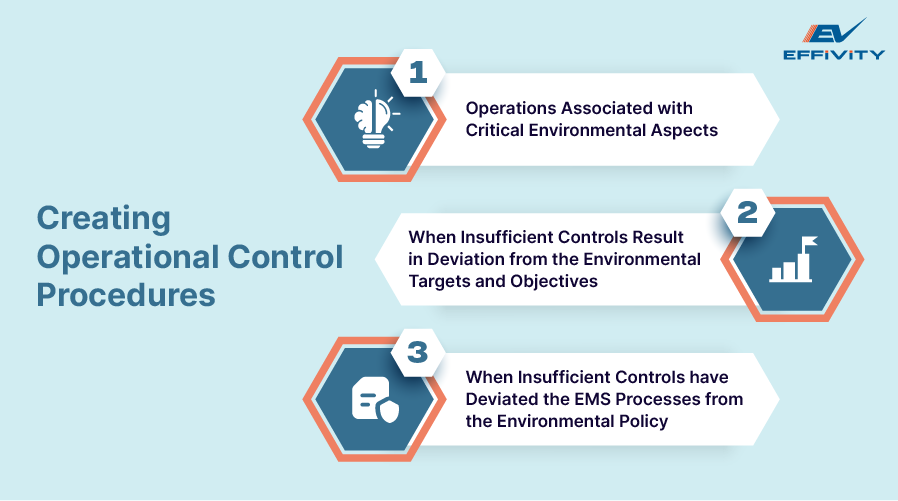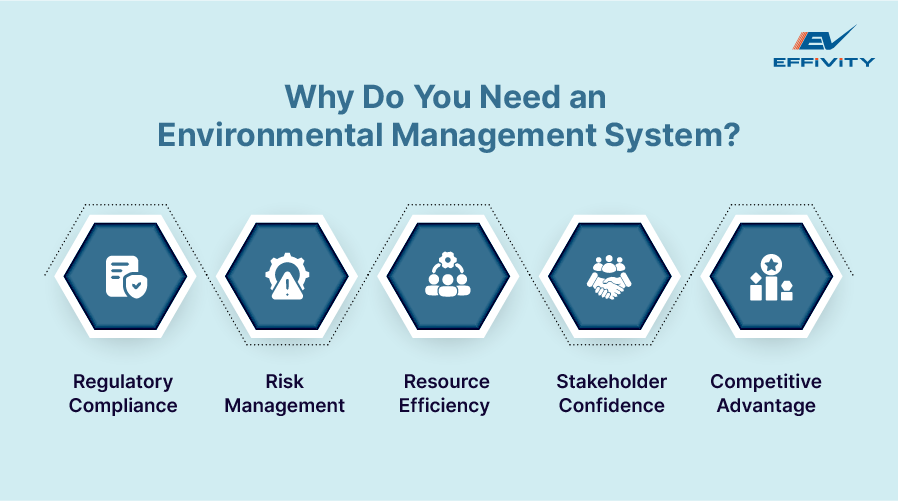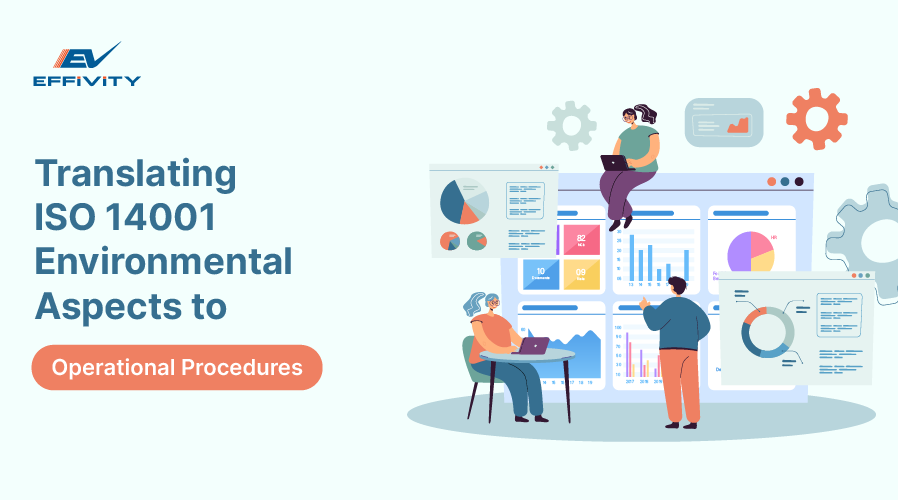Any organization aiming to achieve ISO 14001 compliance and enhance its environmental management system needs to establish strong operational control procedures. Why?
At its core, ISO 14001 focuses on mitigating risks and controlling environmental impact. This makes it important to have effective operational planning and controls as the foundation of your environment management system.
Additionally, for effective management, you need to document procedures for operational control of various environmental procedures. However, to do that, you must first define the critical environmental aspects within your organization.
But how do the ISO 14001 requirements apply to operational control? Are there any procedures that must be complied with to meet operational control requirements, and how are they related to environmental aspects? Do you even need operational control? And most importantly, what happens if none of your environmental factors are critical?
Understanding Which Environmental Aspects Are Significant
ISO 14001 environmental aspect is an element of your organization's activities, products, or services that interact with the environment and how. These become critical when determining which EMS operational controls are needed for ISO 14001 implementation.
The first step in translating ISO 14001 environmental aspects to operational procedures is identifying the environmental aspects. This involves analysing all activities, products, and services within the organization that can have an environmental impact with the help of EMS Software.
1. Mapping Activities
List all organizational activities, processes, products, and services.
2. Determining Interactions
Identify how each activity, product, or service interacts with the environment (e.g., emissions, waste generation, resource consumption).
3. Assessing Significance
Evaluate the significance of each environmental aspect based on factors such as frequency, severity, importance to stakeholders and legal requirements.
Assessing and Prioritizing Environmental Aspects
Once the environmental aspects are identified, the next step is to assess their significance and prioritize them. This process involves evaluating the potential environmental impacts and determining which aspects have the most significant effects. Factors to consider include:
1. Legal and Regulatory Requirements
You must assess the requirements of the local, national, and international environmental laws to determine which environmental aspects they consider critical.
2. Environmental Impact
Next, evaluate the potential environmental harm or benefit. An environmental aspect that has a higher potential to affect the environment should be managed on priority.
3. Frequency and Likelihood
Consider how often the aspect occurs and the probability of significant environmental impact.
4. Stakeholder Concerns
It is important to listen and consider the concerns of stakeholders, including employees, customers, and the community, regarding any environmental aspects of the organization.
Creating Operational Control Procedures
The standard defines three criteria for creating operational control procedures within an organization-

1. Operations associated with critical environmental aspects.
2. When insufficient controls have resulted in deviation from the environmental targets and objectives of the organization.
3. When insufficient controls have deviated the EMS processes from the environmental policy
This means that for an operation with a significant environmental aspect, you have to identify, plan, and execute the operation in a way that aligns with the environmental policy. The operations should also align with environmental targets and objectives to ensure they are performed to specified conditions.
This is possible when you establish, implement, and maintain a written procedure and stipulate operational criteria that allow you to control these situations.
Operational Control Procedures- When Do You Need Them?
As per the ISO 14001 standard, you don't need documented procedures for every operation – only those related to a critical environmental aspect.
However, this brings us back to our initial question - What if none of your environmental aspects are significant? While it is true that any organization has to define the specific, critical environmental aspects, these criteria will still have to be explained to auditors of the certification body who review your EMS for ISO 14001 compliance. As a result, it becomes important to consider the rare case of an organization that does not have a significant environmental aspect.
One example could be a small Software as a Service (SaaS) business. In this case, the company might identify one or more environmental aspects within their organization, but decide that they won't significantly impact our environment.
Therefore, it is possible, although unlikely, that some businesses don't have a significant environmental aspect and, thus, do not need any operational control procedures to be ISO 14001 compliant.
So, now the next question is- when are EMS operational controls required in ISO 14001 EMS? If any operations have critical environmental aspects, procedures are necessary to control the operations. Those critical aspects can include:
1. Air emissions
2. Energy emission, including radiation, heat, or vibrations
3. Releases to land
4. By-products and waste
5. Use of raw materials and natural resources
6. Energy uses
7. Releases to water
8. Any effect on the environment by physical characteristics of the company
Why Do You Need an Environmental Management System?
The purpose of implementing an environmental management system should never be to satisfy a certification authority. The purpose of your EMS is to assist your organization in identifying and controlling its environmental interactions.
It provides a structured approach to managing environmental impacts, fostering sustainability, and enhancing overall environmental performance. Here's how a robust EMS can help you-

1. Regulatory Compliance
An EMS helps organizations comply with environmental laws and regulations, reducing the risk of legal penalties and fines. It ensures that all activities are conducted within the framework of legal requirements and that the steps for ISO 14001 operational control implementation are effectively taken.
2. Risk Management
An EMS enables organizations to anticipate and mitigate environmental risks by identifying and managing environmental aspects. This proactive approach helps prevent incidents that harm the environment or the organization's reputation.
3. Resource Efficiency
An EMS promotes the efficient use of resources such as energy, water, and raw materials. It optimizes resource consumption, allowing organizations to reduce operational costs and minimize their environmental footprint.
4. Stakeholder Confidence
Implementing an EMS demonstrates an organization's commitment to environmental stewardship. This can enhance the organization's reputation, build stakeholder trust, and improve relationships with customers, investors, and the community.
5. Competitive Advantage
In a market where sustainability is increasingly valued, having an EMS can provide a competitive edge. Organizations with robust environmental practices are often preferred by environmentally conscious consumers and business partners.
In Conclusion
If any of your organization's interactions could lead to a negative environmental impact, it is important to have procedures that demand control implementation to manage the operational situation properly.
By doing this, you could avoid negative impacts on our environment, enhance operational efficiency, and boost stakeholder confidence in your organization.






























